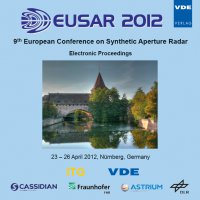Polarimetric SAR Analysis of Tsunami Damage Following the March 11th East Japan Earthquake
Conference: EUSAR 2012 - 9th European Conference on Synthetic Aperture Radar
04/23/2012 - 04/26/2012 at Nuremberg, Germany
Proceedings: EUSAR 2012
Pages: 4Language: englishTyp: PDF
Personal VDE Members are entitled to a 10% discount on this title
Authors:
Sato, Motoyuki; Chen, Si-Wei (Tohoku University, Japan)
Abstract:
The earthquake and tsunami of March 11th, 2011, killed more than 15,000 people in Eastern Japan. The importance of remote sensing for understanding the damage caused by natural disasters is quite significant, and many data sets were acquired after the March 11th earthquake. In this paper, we demonstrate the importance and the potential of full polarimetric Synthetic Aperture Radar (SAR) data. Full polarimetric SAR images acquired by the spaceborne ALOS/PALSAR system on November 21st, 2010 and April 8th, 2011, and acquired by the airborne Π-SAR2 system on March 12th and 18th, 2011, are used for this analysis, respectively. Model-based decomposition is applied and clearly shows the scattering mechanism changes at the damaged downtown of Ishinomaki city and the flooded areas near the main stream of the Kitakami River. Polarization orientation angle is estimated to provide additional information to understand the damage effect in built-up area. Besides, Π-SAR2 data sets are used to analyze the flooded rice paddy fields in Natori city. The relative backscattering values are compared for the multi-temporal images and we could observe that the HV component is more sensitive to the flooded boundary. Finally, the automatically detected flooding maps using the HV component provide relatively accurate results.


